 November 19, 2020 John E. Ross, KD8IDJ, Editor
| ||||||
Note: The ARRL Letter will not be published on November 26 because of the Thanksgiving holiday, and ARRL Audio News will be on hiatus. The ARRL Letter will return on December 3, and ARRL Audio News on December 4. We wish everyone a safe and happy holiday. ARRL Seeks Waiver of Proposed FCC Amateur Application Fees ARRL has urged the FCC to waive its proposed $50 amateur radio application fee. The Commission proposal was made last month in a Notice of Proposed Rulemaking (NPRM) in MD 20-270. The proposal has already drawn more than 3,200 individual comments overwhelmingly opposed to the plan. The fees, directed by Congress and imposed on all FCC-regulated services, are to recover the FCC's costs of handling and processing applications. "Amateur radio applications were not listed when the Congress adopted its 1985 fee schedule for applications, and therefore amateur license applications were excluded from the collection of fees," ARRL said on November 16 in its formal comments on the proposal. "Similarly, a decade later when regulatory fees were authorized, the ARRL argued that the FCC has explicit authority to waive the fees if it would be in the public interest, and should do so for the Amateur Radio Service. Unlike other FCC services, the Amateur Radio Service is all volunteer and largely self-governing, with examination preparation, administration, and grading handled by volunteers, who submit licensing paperwork to the FCC, ARRL pointed out. "Increasingly, the required information is uploaded to the Commission's database, further freeing personnel from licensing paperwork as well as [from] day-to-day examination processes," ARRL said. The Communications Act, ARRL noted, also permits the FCC to accept the volunteer services of individual radio amateurs and organizations in monitoring for rules violations. In 2019, ARRL and the FCC signed a memorandum of understanding to renew and enhance the ARRL's Volunteer Monitor program, relieving the Commission of significant time-consuming aspects of enforcement. These volunteer services lessen the regulatory burden -- including the application burden -- on the Commission's resources and budget in ways that licensees in other services do not, ARRL said. Amateur radio's role in providing emergency and disaster communication, education, and other volunteer services also justifies exempting radio amateurs from FCC application fees. Additionally, amateur radio has also motivated many students to develop critical science, technology, engineering, and mathematics (STEM) skills. ARRL noted that the Amateur Radio Service contributes to the advancement of the radio art, advances skills in communication and technology, and expands the existing reservoir of trained operators, technicians, and electronics experts -- all expressed bases and purposes of the Amateur Radio Service. "Accomplishing these purposes entails working with young people, many of whom may have difficulty paying the proposed application fees," ARRL said. ARRL concluded that the FCC should exercise its authority to exempt amateur radio from application fees generally. If the FCC cannot see its way clear to waive fees altogether, it should waive them for applicants age 26 and younger. Read more. Arizona Congresswoman Introduces National Amateur Radio Operators Day Resolution US Representative Debbie Lesko of Arizona has introduced a resolution to designate April 18, 2021, as National Amateur Radio Operators Day, to recognize the important contributions of amateur radio operators.
"Amateur radio operators are critical in times of crisis and our communities are safer thanks to their dedication to sharing important information with the public," Lesko said. She was approached to introduce the resolution by 12-year-old Raymond, N7KCB, from Peoria, Arizona. "I started Long Distance Responders so I can help prepare the community for emergencies with amateur radio," said Raymond. "There might be a price for a radio, but the ability and knowledge to help someone is truly priceless." As Lesko's resolution notes, World Amateur Radio Day (WARD) is celebrated annually on April 18 to commemorate the founding of the International Amateur Radio Union (IARU) in 1925, and she said her resolution recognizes the amateur radio community with a national day in the United States in 2021. The resolution cites the Amateur Radio Emergency Service (ARES®) for providing "invaluable emergency communications services following recent natural disasters, including but not limited to helping coordinate disaster relief efforts following Hurricanes Katrina, Wilma, and Maria and other extreme weather disasters." International Broadcast Station Interference Overwhelms Hurricane Watch Net As Category 4 Hurricane Iota neared landfall in Central America on November 16, the Hurricane Watch Net (HWN) was forced to suspend operations at 0300 UTC because of what HWN Manager Bobby Graves, KB5HAV, described as "deafening interference from a foreign AM broadcast station that came out of nowhere at 0200 UTC." At the "This was heartbreaking for our team, as the eyewall of Iota was just barely offshore," Graves said. "The storm had weakened slightly to a Category 4 hurricane with sustained winds of 155 MPH." After activating at 1300 UTC, the net was able to collect and forward reports from various parts of Nicaragua and Honduras via WX4NHC throughout the day for relay to forecasters at the National Hurricane Center in Miami. Iota was the most powerful storm on record to make landfall this late in the hurricane season. Graves said the very strong AM signal was on 7.265 MHz. "From my location, it was S-9," he told ARRL. "You could not hear anything but the BC station." Graves noted that other foreign broadcast stations were heard from 7.265 to 7.300 MHz and splattering close by. The offending signal appeared to be from a 500 kW broadcaster in Turkey. Graves said the HWN has a long history on 7.268 MHz, but that the net is now considering a 40-meter frequency below 7.2 MHz. Stations handling emergency traffic during the response to Category 5 Hurricane Iota had requested clear frequencies on November 16 to avoid interfering with the HWN and with WX4NHC, as well as with a Honduran emergency net operation on 7.180 MHz and a Nicaraguan emergency net operating on 7.098 MHz. It's not known if those nets were also affected by interference from the numerous broadcasters on 40 meters. "Thank you to all who allowed us a clear frequency," Graves said on behalf of the HWN. Academic Paper Predicts Sunspot Cycle 25 Could be Among the Strongest Ever A research paper, "Overlapping Magnetic Activity Cycles and the Sunspot Number: Forecasting Sunspot Cycle 25 Amplitude," by Scott W. McIntosh, Deputy Director of the National Center for Atmospheric Research in Boulder, et al., has concluded that Solar Cycle 25 could be among the strongest sunspot cycles ever observed, and will almost certainly be stronger than the just-ended Solar Cycle 24 (sunspot number of 116). The scientists say it will also most likely be stronger than Solar Cycle 23 (sunspot number of 180). As the abstract explains:
"The sun exhibits a well-observed modulation in the number of spots on its disk over a period of about 11 years. From the dawn of modern observational astronomy, sunspots have presented a challenge to understanding -- their quasi-periodic variation in number, first noted 175 years ago, stimulates community-wide interest to this day. A large number of techniques are able to explain the temporal landmarks, (geometric) shape, and amplitude of sunspot 'cycles;' however, forecasting these features accurately in advance remains elusive. "Recent observationally motivated studies have illustrated a relationship between the sun's 22-year magnetic cycle and the production of the sunspot cycle landmarks and patterns, but not the amplitude of the sunspot cycle. Using (discrete) Hilbert transforms on more than 270 years of (monthly) sunspot numbers, we robustly identify the so-called 'termination' events that mark the end of the previous 11-year sunspot cycle, the enhancement/acceleration of the present cycle, and the end of 22-year magnetic activity cycles. Using these, we extract a relationship between the temporal spacing of terminators and the magnitude of sunspot cycles. "Given this relationship and our prediction of a terminator event in 2020, we deduce that Sunspot Cycle 25 could have a magnitude that rivals the top few since records began. This outcome would be in stark contrast to the community consensus estimate of Sunspot Cycle 25 magnitude." McIntosh's recorded presentation of the paper is available. Use passcode z7qCn@3G. ARRL Podcasts Schedule
The latest episode of Eclectic Tech (Episode 21) The On the Air and Eclectic Tech podcasts are sponsored by Icom. Both podcasts are available on iTunes (iOS) and Stitcher (Android), as well as on Blubrry -- On the Air | Eclectic Tech. SpaceX Dragon Capsule Resilience Ferries Four Radio Amateurs to the ISS A SpaceX Dragon capsule carrying four radio amateurs autonomously docked on November 17 at 0401 UTC with the International Space Station (ISS). A SpaceX Falcon 9 launcher carrying the precious payload went into space on Sunday, November 15, from NASA's Kennedy Space Center. They comprise the ISS Expedition 64/65 crew. "Well, the ISS is loaded with hams now," Amateur Radio on the International Space Station (ARISS) US Delegate for ARRL Rosalie White, K1STO, said on Tuesday. "These four arrived very early this
morning Eastern Time: NASA astronauts Victor Glover, KI5BKC; Mike Hopkins, KF5LJG, and Shannon Walker, KD5DXB, as well as Japan Aerospace Exploration Agency (JAXA) astronaut Soichi Noguchi, KD5TVP." This marks Glover's first time in space. The others all are ISS veterans. Earlier this year, NASA ISS Ham Project Coordinator Kenneth Ransom, N5VHO, held amateur radio licensing study sessions for Glover, who passed the Technician-class exam on August 20. The four will remain on station until next spring. They joined Expedition 64 Commander Sergey Ryzhikov and Flight Engineer Sergey Kud-Sverchkov of the Russian space agency Roscosmos, on the ISS. White said all but Noguchi likely will take part in ARISS contacts with schools. White said the first school contact is tentatively scheduled for
December 4 with Tecumseh High School in Oklahoma, home of the Tecumseh High School Amateur Radio Club, K5THS. She said the students have earned their ham licenses, and the club has built an antenna and is learning about satellites and circuits. Members of the South Canadian Amateur Radio Society of Norman, Oklahoma, are providing support and mentoring assistance. The Sunday launch from Kennedy Space Center marked only the second crewed-flight for the SpaceX Crew Dragon, which became the first commercial vehicle to put humans into orbit when astronauts Doug Hurley and Bob Behnken, KE5GGX, launched in May, and NASA gave SpaceX the go for future such launches. "The return of human spaceflight to the United States with one of the safest, most advanced systems ever built is a turning point for America's future space exploration," SpaceX claimed, "and it lays the groundwork for missions to the moon, Mars, and beyond." SKYWARN Recognition Day 2020 Adjusts for COVID-19 Since 1999, the annual SKYWARN⢠Recognition Day (SRD) has celebrated the long relationship between the amateur community and the National Weather Service (NWS). SKYWARN Recognition Day 2020 will take place from 0000 UTC to 2400 UTC on December 5. Amateur radio operators comprise a large percentage of SKYWARN volunteers across the country. The purpose of the event is to recognize amateurs for the vital public service they perform during times of severe weather and to strengthen Normally, each year, radio amateurs participate from home stations and from stations at NWS forecast offices with the goal of making contact with as many offices as possible. This year, due to COVID-19 restrictions, participation from NWS forecast offices is expected to be minimal, so the focus will shift this year to contacting as many trained SKYWARN spotters as possible. During the event, operators are encouraged to exchange their name, home station, SRD number, and current weather conditions with other participating stations. The event website provides complete operating guidelines. Radio amateurs may sign up for a SKYWARN Recognition Day number by completing a participant sign-up form. A SKYWARN Recognition Day Facebook page has been created and will host a variety of live and recorded segments throughout the day. ARRL Learning Network Webinars Visit the ARRL Learning Network website (a members-only benefit) to register for upcoming sessions and to view previously recorded sessions. The schedule is subject to change. Amateur Radio's Role at the Boston Marathon Bombing: Steve Schwarm, W3EVE Amateur radio has played a significant role in public service Tuesday, December 8, 2020, 10 AM PST / 1 PM EST (1800 UTC) Learn and Have Fun with Morse Code: Howard Bernstein, WB2UZE, and Jim Crites, W6JIM Morse code, or "CW," is a popular ham radio operating mode. Learning CW does not have to be an arduous or lonely experience. Learn, practice, and enjoy CW with the methods used by the Long Island CW Club. Thursday, December 17, 2020, 5 PM PST / 8 PM EST (0100 UTC on Friday, December 18) Announcements
Time to Try for an SS "Clean Sweep" on Phone The ARRL November Sweepstakes (SS) phone weekend is upon us, and this year, participants will have to search out an additional Section. The SSB event is from November 20 - 22 (UTC), getting under way at 2100 UTC on Saturday and continuing through 0259 UTC on Monday. Stations may operate 24 of the available 30 hours. The SS Operating Guide package, available for download, includes all rules and The number of ARRL and Radio Amateurs of Canada (RAC) sections rose to 84 earlier this year with the addition of Prince Edward Island (PE) as a separate entity. The objective of SS -- or "sweeps" -- is to work as many stations in as many of the 84 sections as possible within 24 hours of operating. The number of sections worked is a score multiplier, and working all of them is a "clean sweep." The SS contest exchange has deep roots in message-handling protocol and replicates a radiogram preamble. In SS, stations exchange:
Direct questions to the ARRL Contest Program. The K7RA Solar Update Tad Cook, K7RA, Seattle, reports: Solar activity declined dramatically over the past week, with average daily sunspot numbers going from 31.3 to 12. On November 15 and 16, no sunspots appeared, greatly affecting the decline in this week's average. Solar flux weakened from a weekly average last week of 90, to 79.8 this week.
Predicted planetary A index is 5, 8, 12, and 8 on November 19 - 22; 5 on November 23 - December 2; 8 on December 3 - 4; 5 on December 5 - 17; 8, 12, 8, 10, and 12 on December 18 - 22; 5 on December 23 - 29; 8 on December 30 - 31, and 5 on January 1 - 2, 2021. Sunspot numbers for November 12 - 18 were 27, 24, 11, 0, 0, 11, and 11, with a mean of 12. The 10.7-centimeter flux was 85.1, 81.9, 80.2, 78.7, 76.6, 79.1, and 77.3, with a mean of 79.8. Estimated planetary A indices were 3, 3, 3, 4, 2, 3, and 4, with a mean of 3.1. Middle latitude A index was 3, 2, 2, 2, 0, 3, and 3, with a mean of 2.1. A comprehensive K7RA Solar Update is posted Fridays on the ARRL website. For more information concerning radio propagation, visit the ARRL Technical Information Service, read "What the Numbers Mean...," and check out K9LA's Propagation Page. A propagation bulletin archive is available. For customizable propagation charts, visit the VOACAP Online for Ham Radio website. Share your reports and observations. In Brief...
Just Ahead in Radiosport
Upcoming ARRL Section, State, and Division Conventions Note: Many conventions and hamfests have been canceled or postponed due to the coronavirus pandemic. Check the calendar of canceled events on the ARRL website.
Find conventions and hamfests in your area. ARRL -- Your One-Stop Resource for . .
Subscribe to...
Free of charge to ARRL members...
| ||||||
.jpg) Amateur Service was excluded, except for the costs associated with issuing vanity call signs." The new statutory provisions are similar. Amateur radio license applications are not addressed in the application fees section and explicitly excluded from regulatory fees," ARRL said, and there is "no evidence of any intent by Congress to change the exempt status of amateur applications and instead subject them to new fees."
Amateur Service was excluded, except for the costs associated with issuing vanity call signs." The new statutory provisions are similar. Amateur radio license applications are not addressed in the application fees section and explicitly excluded from regulatory fees," ARRL said, and there is "no evidence of any intent by Congress to change the exempt status of amateur applications and instead subject them to new fees."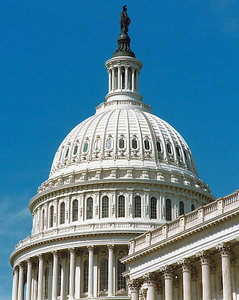
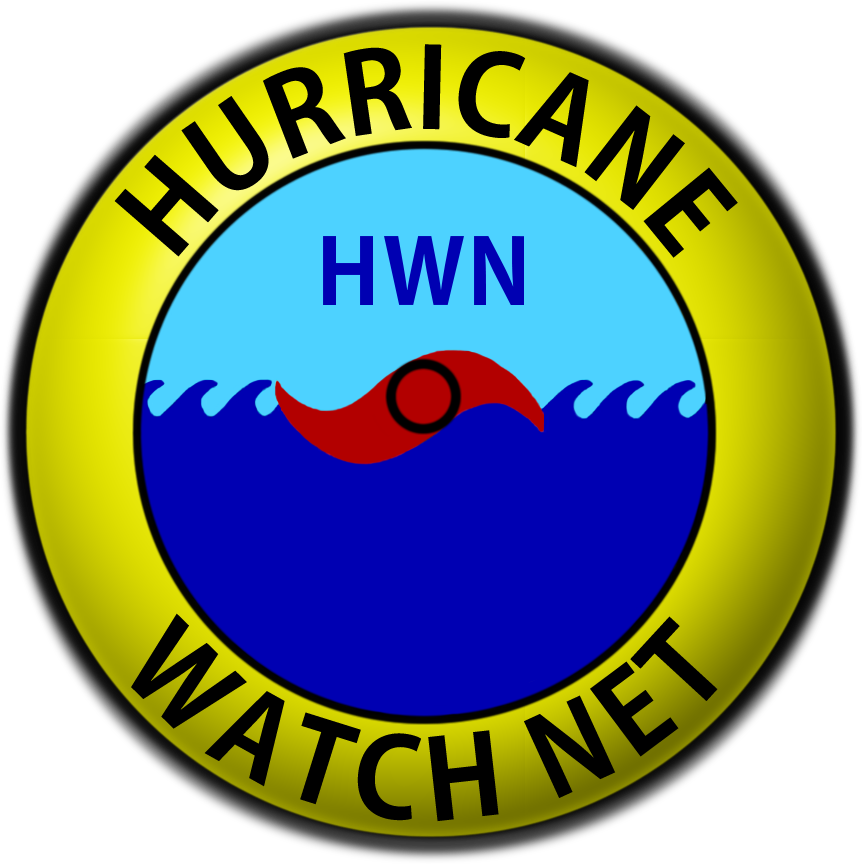 time, the net had shifted to its 40-meter frequency of 7.268 kHz, collecting real-time weather and damage reports via amateur radio.
time, the net had shifted to its 40-meter frequency of 7.268 kHz, collecting real-time weather and damage reports via amateur radio.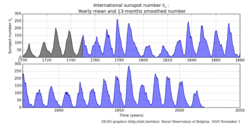
.jpg) The latest episode of the On the Air podcast (Episode 11) discusses how to choose the right antenna for your station, considering several aspects that go beyond cost and complexity.
The latest episode of the On the Air podcast (Episode 11) discusses how to choose the right antenna for your station, considering several aspects that go beyond cost and complexity..jpg) features a discussion about undersea homes for data servers, and a chat with Nigel Vander Houwen, K7NVH, about HamWAN networks.
features a discussion about undersea homes for data servers, and a chat with Nigel Vander Houwen, K7NVH, about HamWAN networks.
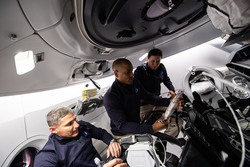
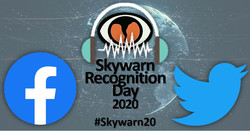 the bond between radio amateurs and local NWS offices. The event is cosponsored by ARRL and the NWS.
the bond between radio amateurs and local NWS offices. The event is cosponsored by ARRL and the NWS.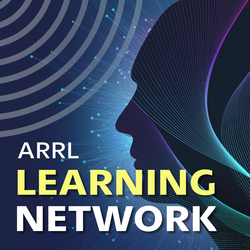 communications for the Boston Marathon for several decades. That role was put to the test in 2013 when two bombs were exploded near the finish line. This presentation will describe the role that ham radio played at the Marathon and how that role changed due to the bombing.
communications for the Boston Marathon for several decades. That role was put to the test in 2013 when two bombs were exploded near the finish line. This presentation will describe the role that ham radio played at the Marathon and how that role changed due to the bombing.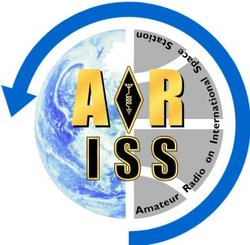 ARISS
ARISS 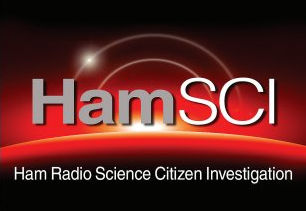 HamSCI
HamSCI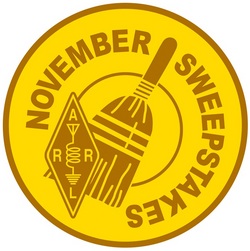 examples of log formatting. The deadline to submit SS phone entries is November 29.
examples of log formatting. The deadline to submit SS phone entries is November 29.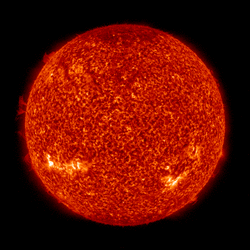 Predicted solar flux over the next 45 days is also relatively weak, at 75 on November 19 - 21; 73 on November 22; 70 on November 23 - 26; 72 on November 27; 75 on November 28 - December 8; 72 on December 9 - 10; 70 on December 11 - 12; 75, 72, and 72 on December 13 - 15; 70 on December 16 - 22; 72 on December 23 - 24, and 75 on December 25 - January 2, 2021.
Predicted solar flux over the next 45 days is also relatively weak, at 75 on November 19 - 21; 73 on November 22; 70 on November 23 - 26; 72 on November 27; 75 on November 28 - December 8; 72 on December 9 - 10; 70 on December 11 - 12; 75, 72, and 72 on December 13 - 15; 70 on December 16 - 22; 72 on December 23 - 24, and 75 on December 25 - January 2, 2021..jpg) A new "Multi-Transmitter Distributed" category is being added to the
A new "Multi-Transmitter Distributed" category is being added to the .jpg) Colorado ARES Group Thanked for Wildfire Support Boulder County, Colorado, Director of the Office of Emergency Management Mike Chard thanked Boulder County ARES (BCARES) for its contributions in support of the recent wildfire emergency response. Chard told BCARES Emergency Coordinator Allen Bishop, K0ARK, that with the fire's lack of expansion and the fact that the snow has significantly lowered the fire danger, he feels BCARES can take a breath for the foreseeable future. As temperatures begin to return to normal and with the possibility of winds increasing, however, the danger has not gone away, and the need for BCARES services may return at any time. -- Thanks to Boulder Amateur Television Club TV Repeater's Repeater
Colorado ARES Group Thanked for Wildfire Support Boulder County, Colorado, Director of the Office of Emergency Management Mike Chard thanked Boulder County ARES (BCARES) for its contributions in support of the recent wildfire emergency response. Chard told BCARES Emergency Coordinator Allen Bishop, K0ARK, that with the fire's lack of expansion and the fact that the snow has significantly lowered the fire danger, he feels BCARES can take a breath for the foreseeable future. As temperatures begin to return to normal and with the possibility of winds increasing, however, the danger has not gone away, and the need for BCARES services may return at any time. -- Thanks to Boulder Amateur Television Club TV Repeater's Repeater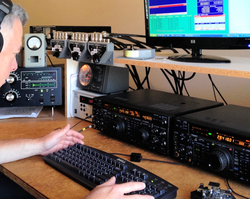 November 25 -- UKEICC 80-Meter Contest (CW)
November 25 -- UKEICC 80-Meter Contest (CW)







